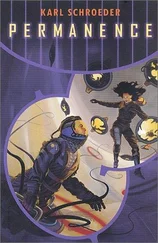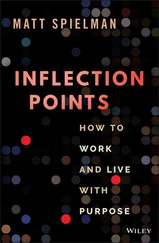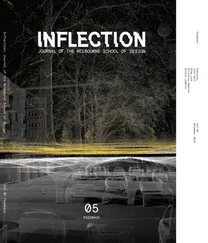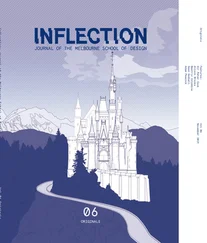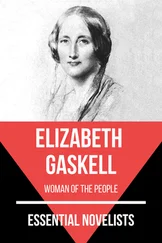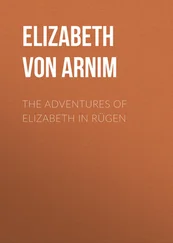Permanent buildings are a result of large assemblages of different things working together to keep them standing: foundations, windows and ceilings make buildings stable and keep the weather outside; various institutions and organisations pay cleaners, caretakers and maintenance crews to maintain and repair its different parts; financial institutions such as banks and insurance companies provide capital to upgrade, rebuild and repair as time goes by. This creates a particular experience of use, and like the twin on the train, this enables other kinds of behaviour and activity to be focused on. Permanence is a kind of performance, but it is one we benefit from participating in. The permanence of architecture is a beneficial illusion that helps to sustain the institutions and organisations we want to have as stable markers of our society—courts, houses, great landmarks, universities, commercial centres, parliaments and civic spaces.
Performing Temporariness
What then of the temporary? Temporary architecture is a minor tradition that requires naming in a way that permanent architecture does not. Temporary projects have a beginning and an end. Permanent architecture is finished when it opens—this is its final state. A temporary project is finished when it disappears and ceases to be.
After the earthquakes in Christchurch, temporary projects proliferated with hundreds spreading across the damaged city. Agropolis was one such project initiated by Jessica Halliday, director of the Festival of Transitional Architecture (FESTA) and Bailey Perryman, a local food activist. It was developed as part of a larger collaboration that included local residents, businesses, chefs and artists. Launched at FESTA in 2013, the project was located on a vacant central site, one of thousands in the central city in which 80 percent of the area was demolished.
Agropolis consisted of around 12 large planter boxes, many of which were constructed from demolished houses, a large four-part composting facility and a tool shed made of earth. The project worked with local cafés to gather their green waste for composting and growing vegetables to sell back to the shops. Agropolis was temporary, it evolved at its first site over two years and then moved to another in 2015 before integrating with a larger urban farm project in 2016.
Authors of the 2012 book The Temporary City, Peter Bishop and Lesley Williams, define temporary projects in relation to intention. 11For them a project is temporary when the people that make and use it understand that it will not last. This kind of temporary use can be liberating: experiments and investigations can be made without the risk of permanent and expensive failure; different materials can be introduced and arranged into dynamic forms; members of the public and students can participate in the design and making of places with little fear of consequence; a larger and more radical variety of activities can be performed in public such as film screenings, bathing, dancing, shopping, eating and the growing of food. Examples of temporary projects internationally range from protests such as Occupy to community gardens and commercial pop-up spaces and are produced by a variety of designers, architects, retailers, activists, artists and community groups. Agropolis was an experiment in building systems of exchange and an alternative economy of food and waste based on freely given expertise and hundreds of volunteer hours.
Bringing things together—materials, organisations, people, practices—for a temporary period of time changes the relationship people have with the project or place. Experiences of provisionality, experimentation and uncertainty characterise temporary projects. Agropolis’ temporary condition produced a heightened sense of commitment and engagement. Bailey Perryman comments ‘You know every day of these projects is unique.” 12
Agropolis during FESTA 2014
Photograph by Annelies Zwaan
An important aspect of temporary projects is that the systems and assemblages required to bring them into being are often not as well integrated into the fabric of a place. Formal organisations such as councils and contractors, and integration with complex infrastructures of power, phone and water are frequently avoided by temporary projects, and instead ad hoc, improvised solutions are preferred. Often this means a more public display of making and developing projects and systems. In this way, the things involved with making, maintaining and unmaking of the projects are foregrounded. In contrast to more permanent architectures, in temporary projects such as Agropolis, maintenance and repair were public and visible activities, and through these different practices were brought to public view. In October 2013, Agropolis was launched with an event in the garden and the public was invited to help mix the mud for the earth shed with their feet. Many events, meetings, tours, festivals and working bees took place over its lifetime to sustain the farm and to offer people experiences and new knowledge about building and planting. These were experiences of a temporary project, but other forms of temporality were also being created and experienced at the same time.
Both permanent and temporary architecture can be framed as a performance of invisible and public entities working together to produce effects that are experienced by people. This framing suggests that different types of assembling and gathering may create other types of temporal experience.
Event Times
Event time is a sharp and focused form of temporality characterised by festivals and carnivals. In the 1970s and ‘80s, Bernard Tschumi argued that architecture can only be understood through the event, that space makes no sense without considering the things that happen within it. 13At its broadest, this argument arranges the programme and intent of the space as being a critical part of its imagining. In relation to the Agropolis project, festivals and events brought into the site include temporary restaurants, tours, talks, construction processes and installations.
Events often produce vibrant and surprising atmospheres and because each involves a unique gathering of people, weather and materials, the atmosphere cannot be repeated—they are experienced as unique and important. Projects become platforms for events that then offer one-off experiences, but the variability of the project’s parts—weather, furniture, different audiences—affects the degree to which the event is experienced as unique or one of a series.
Rhythms and Repetitions
Regular repeating events occur in both temporary and permanent projects. This is a kind of experience created by periodic events. These are created by bringing together certain objects and people at regular intervals. Entities might include people, tools, building parts, plants, planets and tides. These different entities are often hidden in permanent projects and revealed in temporary ones.
Agropolis had one part-time employee, Annelies Zwaan, who managed the project. Site maintenance was carried out by volunteers who regularly visited to water plants and weed the planter boxes. The farm was also involved with a network of local cafés that provided green waste for composting. This material was moved by a cargo bike built by another project called RAD Bikes, which shared the site for a year in 2014–15. These kinds of daily rhythms and routines were part of its critical maintenance and ongoing activities, and had a sustaining and connecting experience that mixed human and non-human actors.
The growing of food introduced a range of entities that attended to particular rhythms. The relationship between the earth and sun gives rise to seasonal variation. Certain plants were grown at particular times of the year and this required organisation and communication. It brought seasonal changes such as day length, angle of light and temperature into the experience of the projects. Similarly, the taste and colour of food at different moments in the year helped articulate and differentiate the seasonal rhythms of time. A project like Agropolis introduced a more traditional set of entities into urban life. The rhythms of watering, planting and seasons are circular—they leave and return with a predictable rhythm, and because of this, knowledge and practices can be built from them.
Читать дальше

